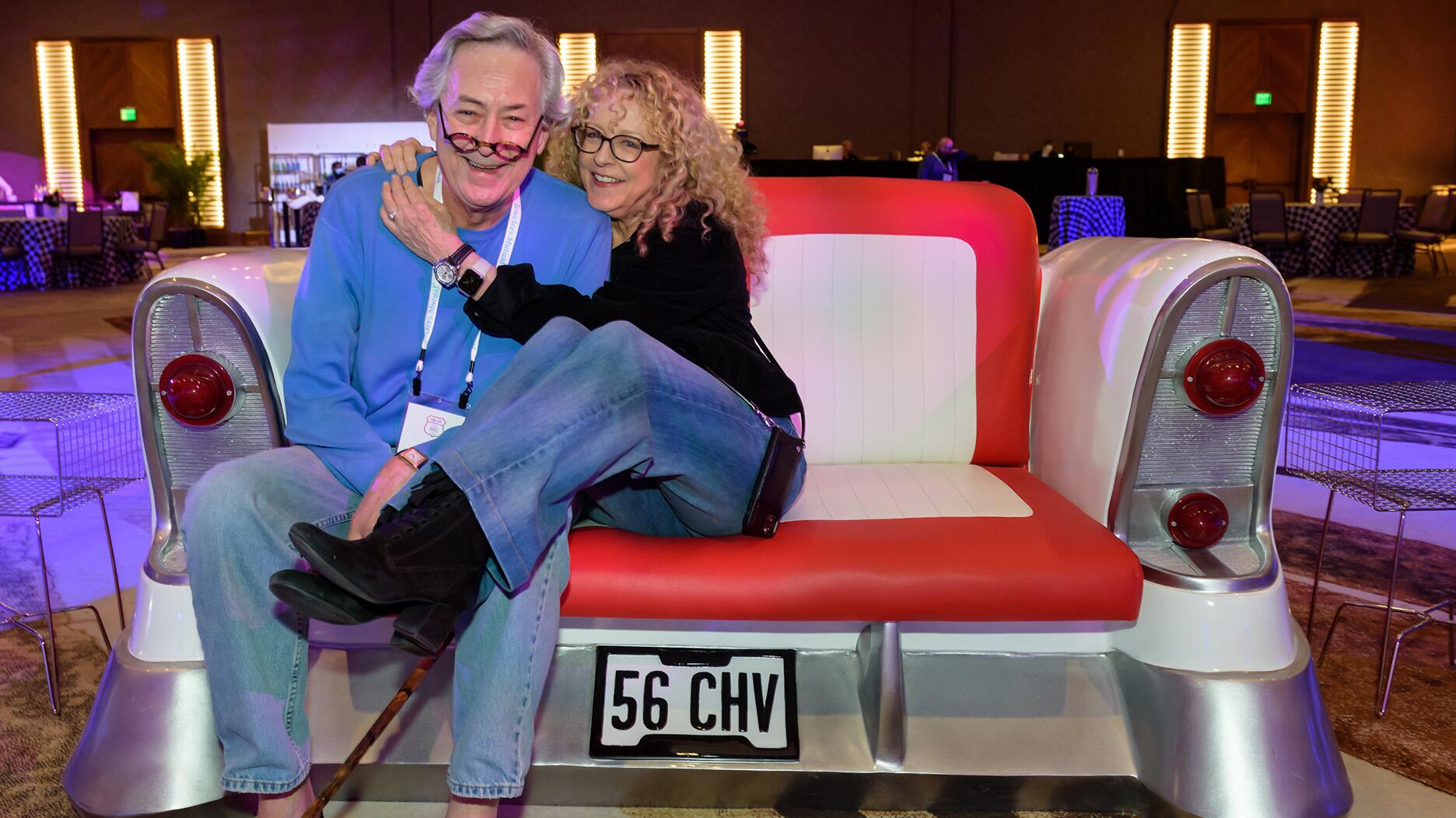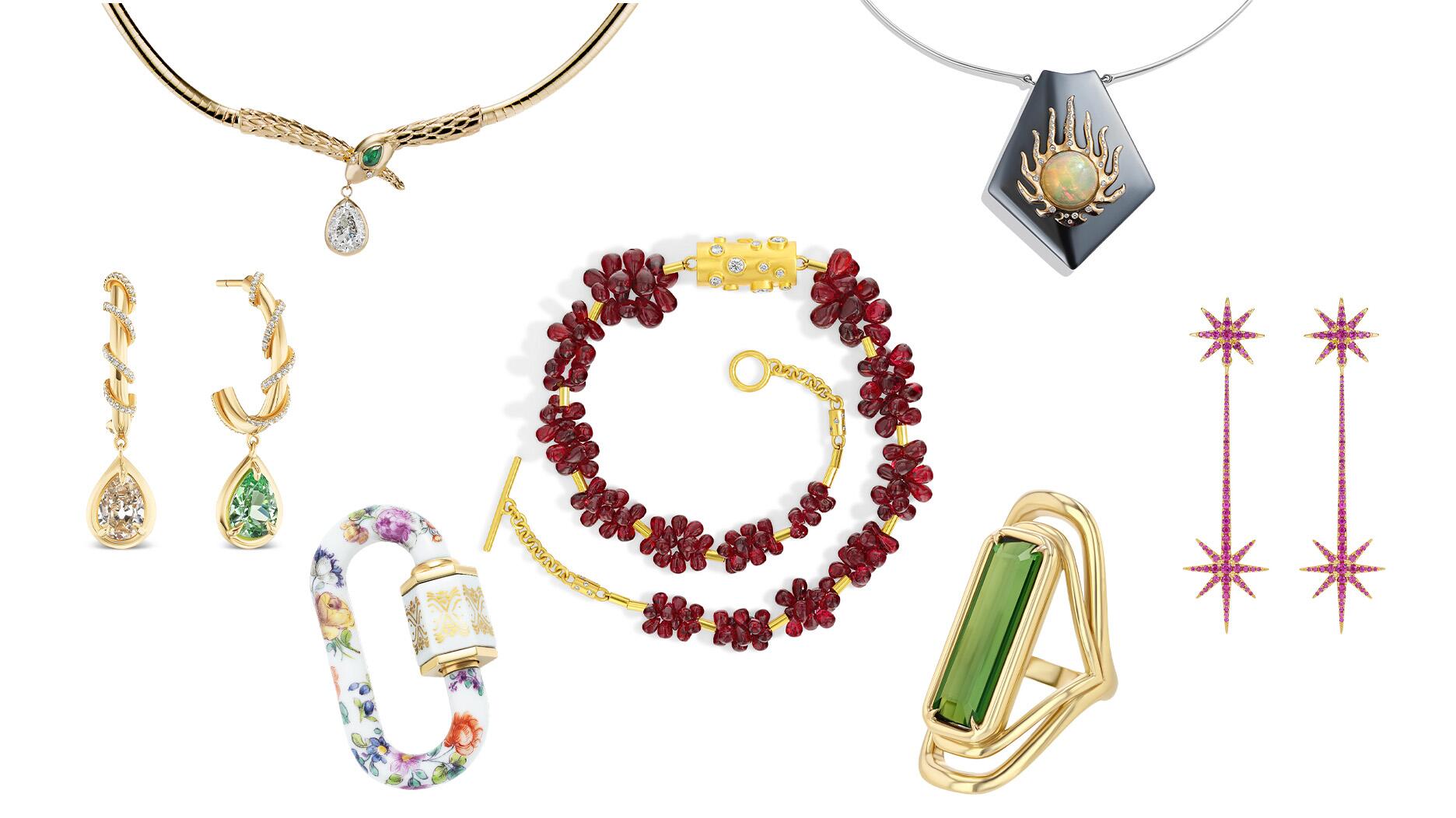My 12 Favorite Quotes From All Those Conversations in Park City
Editor-in-Chief Michelle Graff shares some verbal highlights from Jewelers Mutual’s inaugural “Conversations” event in Park City, Utah.

But, before the event gets too far behind me, I wanted to share some of my favorite quotes from the two-day event, held over the weekend of Oct. 14 at the Deer Valley Resort in Park City, Utah.
These quotes are not presented in chronological order but, rather, in order of interest to me.
Hopefully, you will find them interesting too.
On ‘genderless’ jewelry
“Men have been wearing jewelry since ancient times, and they were comfortable with that.”
— Paola De Luca, CEO, The Futurist
“I think we are moving to a place where gender will not be a distinction in anything we make. ‘Men’s jewelry,’ I don’t think, will be a thing.”
— Victoria Gomelsky, editor-in-chief, JCK magazine
De Luca and Gomelsky spoke on the same panel on Sunday afternoon about fashion and trends. The topic of brands moving away from labeling collections as “men’s” and “women’s” came up more than once during the discussion.
We see it all the time now among the big watch and jewelry players, though as Paola so astutely noted, gender fluidity in jewelry is not new; it’s just new to us right now.
On the metaverse
“It’s super-early. Lean in; don’t run from it.”
“Chinese consumers are the most advanced in the world. They don’t call NFTs, ‘NFTs.’ They call them digital collectibles, because that’s what it is.”
— Liz Bacelar, global executive director of innovation, Estée Lauder Companies
In my opinion, Bacelar was the best speaker of the weekend—energetic, engaging and beyond knowledgeable about Web 3.0, the next iteration of the internet that will be decentralized and powered by AI and machine learning.
Bacelar broke down the esoteric topics of the metaverse and NFTs—both expected to be key parts of Web3—in such a way that they would be understandable to anyone.
She also gave some of the best advice of the entire conference in telling retailers that, unless they plan to retire in the next six years, they need to embrace it.
On sustainability
“In 2020, everything changed. Everything changed for all of us forever.”
“I think it’s about not getting discouraged but going one step at a time toward very lofty goals.”
— Sally Morrison, director of PR for natural diamonds, De Beers Group
Morrison spoke on the last panel of the weekend, a Sunday afternoon session about sustainability.
Her first remark referenced the way we all came to realize the impact our constant consumption has on the Earth when the pandemic forced billions of people to stay home and the smoke literally cleared.
The context of her second remark had to do with De Beers’ ambitious plan to be carbon neutral by 2030.
Both she and fellow panelist Johanna Levy, GIA’s first vice president whose role focuses on sustainability, made the point that for smaller players in the jewelry industry, being more sustainable doesn’t have to be a massive, expensive, and intimidating undertaking.
It can start with small things, like reducing energy consumption in your stores, getting involved with a local environmental group, or not handing out plastic water bottles to customers all the time (I think the elimination of plastic water bottles is also a good note for all future conference organizers to take.)
On overlooked generations
“Millennials are not dead. For some reason, I have not heard anyone talking about millennials.”
“Boomers and Gen Xers are not dead.”
— Paola De Luca, CEO, The Futurist
True to form, De Luca was one of the most quotable speakers of the weekend.
While there was a lot of talk over the weekend about Gen Z and their social media platform of choice, TikTok, De Luca astutely pointed out that older generations—the millennials, the baby boomers and, yes, even the lonely and forgotten latchkey kids of Generation X—still have a lot of buying power and many years left ahead of them.
It reminded me of the talk De Luca gave a couple years ago in Vicenza on the “midult,” which our Senior Editor Ashley Davis covered in an article that generated a lot of buzz.
On ‘micro-influencers’
“The days of overly curated Instagram accounts, I think, are almost gone.”
“As a brand, I’d be cautious about sending out too much free stuff.”
— Jessica Quillin, co-founder and principal, It’s a Working Title
Quillin’s presentation on Saturday afternoon focused on the shift from macro-influencers—meaning major public figures like Kim Kardashian—to micro-influencers in the world of marketing, something National Jeweler columnist Lilian Raji explored for us a couple years ago.
Consumers today want authenticity. They want to feel like the influencer genuinely cares about the product they promote, and is a real person like them, with flaws and vulnerabilities.
(For those interested in pursuing a relationship with an influencer, micro or otherwise, the Jewelers Vigilance Committee provides a free “Disclosures 101” guide on its website; scroll down on this page to find it.)
On diversity and inclusion
“Diversity and inclusion is a very important aspect of marketing today.”
— Paola De Luca, CEO, The Futurist
It is also an important aspect of staffing, and organizing events like conferences and trade shows.
De Luca’s quote came after Elyssa Jenkins-Pérez, director of membership and digital content at JVC, commented during the Q&A portion of De Luca’s panel that she will immediately leave a brand’s Instagram page if she’s scrolling through and sees no diversity.
And she’s not the only one.
“That is really important and a lot of my friends are like that,” Jenkins-Pérez said.
On not diluting your brand
“We don’t have to be all things to all people. When you do that, as a brand you get into difficult territory.”
— Keith Levy, president, Milk Bar
Milk Bar is the now-huge chain of bakeries that pastry chef Christina Tosi started with one tiny shop in the East Village in New York. I remember going in there for a slice of crack pie (delicious) and cup of coffee when I lived in the East Village and drank coffee, both a number of years ago now.
Levy is the chain’s president and an operating partner at Sonoma Brands, one of the private equity firms pouring money into Milk Bar so it can expand.
A lot of people seemed impressed with Milk Bar’s growth and really enjoyed Levy’s presentation.
I have other thoughts about private equity firms in retail (and in general) but I liked Levy’s quote and I thought it summed up what a lot of other speakers were saying over the weekend.
You don’t have to try everything—TikTok, the metaverse, influencers, etc.—but you do have to define your brand and be able to answer these two questions.
What makes your jewelry brand or store unique? Why should people buy from you instead of from one of your competitors?
The Latest

It purchased the “Grosse Pièce,” an ultra-complicated Audemars Piguet pocket watch from the ‘20s, for a record-breaking price at Sotheby’s.

Sponsored by Digital Monitoring Products

The boutique is slated to open this week inside Terminal 8, offering pre-owned Rolex watches and more to international travelers.

How Jewelers of America’s 20 Under 40 are leading to ensure a brighter future for the jewelry industry.

The lab-grown diamond grower now offers custom engagement and fashion jewelry through its Kira Custom Lab Jewelry service.


The special-edition egg pendant ingested in a New Zealand jewelry store was recovered after a six-day wait.

The “Love and Desire” campaign is inspired by the magic that follows when one’s heart leads the way, said the brand.

Roseco’s 704-page catalog showcases new lab-grown diamonds, findings, tools & more—available in print or interactive digital editions.

Two awardees will receive free tuition for an educational course at the Swiss lab, with flights and lodging included.

Berta de Pablos-Barbier will replace Alexander Lacik at the start of January, two months earlier than expected.

Sotheby’s held its first two jewelry sales at the Breuer building last week, and they totaled nearly $44 million.

Winners will receive free registration and lodging for its fourth annual event in Detroit.

Here are six ideas for making more engaging content for Instagram Reels and TikTok, courtesy of Duvall O’Steen and Jen Cullen Williams.

The honorees include a notable jewelry brand, an industry veteran, and an independent retailer.

Carlos Jose Hernandez and Joshua Zuazo were sentenced to life without the possibility of parole in the 2024 murder of Hussein “Sam” Murray.

Yood will serve alongside Eduard Stefanescu, the sustainability manager for C.Hafner, a precious metals refiner in Germany.

The New Orleans jeweler is also hosting pop-up jewelry boutiques in New York City and Dallas.

Set in a Tiffany & Co. necklace, it sold for $4.2 million, the highest price and price per carat paid for a Paraíba tourmaline at auction.

The jeweler’s “Deep Freeze” display showcases its iconic jewelry designs frozen in a vintage icebox.

Take luxury gifting to new heights this holiday season with the jeweler’s showstopping 12-carat sphene ring.

This year's theme is “Unveiling the Depths of the Ocean.”

In its annual report, Pinterest noted an increase in searches for brooches, heirloom jewelry, and ‘80s luxury.

Starting Jan. 1, customers can request the service for opal, peridot, and demantoid garnet.

The 111-year-old retailer celebrated the opening of its new location in Salem, New Hampshire, which is its third store in the state.

The new catalog features its most popular chains as well as new styles.

The filmmaker’s personal F.P. Journe “FFC” prototype was the star of Phillips’ recent record-setting watch auction in New York.

The new location in the Design District pays homage to Miami’s Art Deco heritage and its connection to the ocean.




























